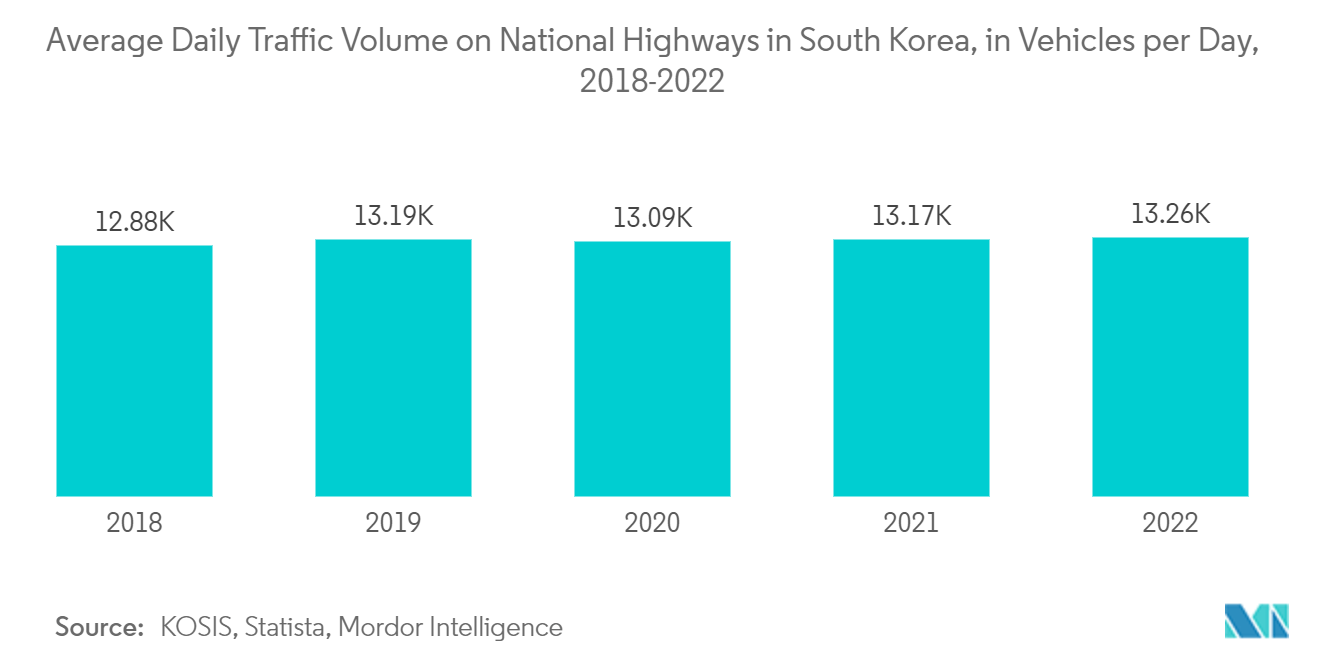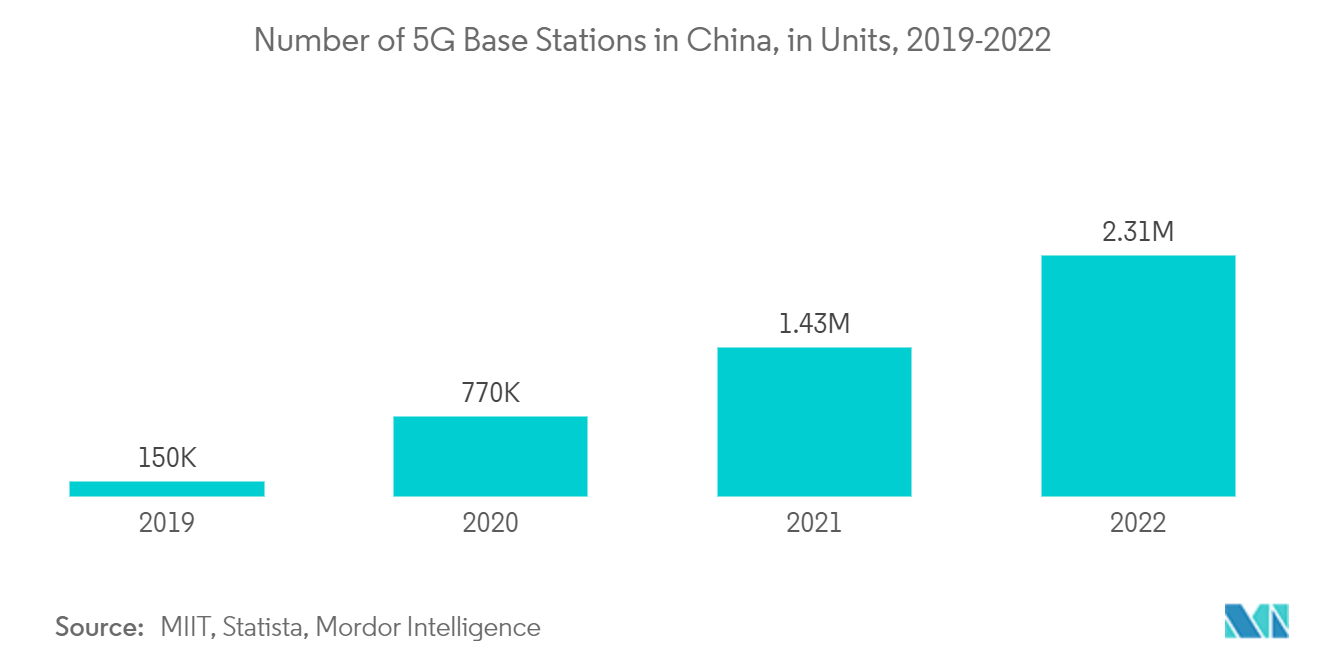Market Trends of Asia-Pacific Connected Cars Industry
Integrated Navigation System to gain significant Traction in the coming years
The navigation segment in the connected cars market is expected to showcase surging growth due to the extensive use of GPS systems by drivers. They use it for route finding and route planning services in congested cities like Shanghai, Tokyo, Mumbai, Jakarta, Bangkok, and Seoul to avoid traffic jams and get to their destinations quickly. For instance, Bengaluru in India is ranked as the second most congested in the world as of 2022, with drivers spending nearly 260 hours a year in traffic rush.
Further, it is estimated that the average daily traffic volume on national highways in South Korea expanded at a CAGR of 0.6% between 2018-2022. Therefore, accessing real-time information becomes extremely necessary for consumers to save driving time and enhance their driving experience. It is solved by the integration of navigation systems in vehicles.
Moreover, increasing government support and enhancement of the network capability of countries across the Asia-Pacific region is further aiding the demand for integrated navigation systems in vehicles. The Chinese Ministry of Industry and Information is actively encouraging carmakers to adopt the domestically developed Beidou satellite navigation system in their connected cars. Thus, many car manufacturers are launching new models with built-in connectivity features to tap into the incremental growth opportunities in the market. For instance,
- In March 2023, Chinese electric vehicle manufacturer Xpend announced the launch of its advanced driver assistance system (ADAS), which is similar to Tesla's full self-driving (FSD) software. It enables its cars to navigate their way automatically on city streets. The newly developed X NGP (navigation-guided pilot) software can be fitted in G9 Max and P7i Max models in Guangzhou, Shenzhen, and Shanghai.
- In August 2022, Toyota launched the new generation of Sienta in Japan. It comes with a suite of optional T-Connectivity services like destination services and route settings.
The increasing smartphone penetration rate across countries such as India and China is positively contributing to the growth of the navigation segment of the connected cars market. It is because certain vehicle model allows the on-screen display of routes, which is connected via smartphone. It helps in enhancing customers' convenience in locating nearby shops, petrol stations, malls, and other places. Therefore, the integration of navigation systems is anticipated to become a requirement of consumers willing to purchase connected cars, thereby positively impacting the growth of this segment during the forecast period.

China to dominate the Asia-Pacific Connected Cars Market during the forecast period
The increasing urbanization rate, growing population, and rising per capita disposable income of consumers across China serve as major determinants for the growth of the connected cars market in these countries. According to the World Bank, the urbanization rate in China stood at 64% in 2022, a substantial increase from 2018, when the urbanization rate stood at only 59%. Further, it is estimated that the per capita disposable income in China stood at CNY 36,883 (USD 5,046) in 2022, representing a nominal increase of 5% compared to 2021 and a real increase of 2.9% after deducting price factors. As more consumers migrate to urban cities for better employment and financial opportunities, there exists a greater demand for private transportation medium. Along with that, the increasing personal disposable income of consumers leads to enhancing the demand for advanced vehicles in the market, such as connected cars.
Moreover, enhancement in 5G technology and rapid investment in developing an efficient cloud network infrastructure are further fuelling the demand for connected cars in China.
- It is estimated that as of March 2023, China is successful in building 2.31 million 5G base stations covering all prefecture-level cities, counties, and urban areas nationwide.
Since connected cars rely heavily on fast internet and cloud services, China's aggressive strategy to expand the 5G network is assisting domestic auto manufacturers in the country. It is to utilize this opportunity and launch advanced connected cars in the market, which relies heavily on network connectivity.
The connected cars market is expected to significantly expand during the forecast period with increasing government support to promote the usage of connected vehicles.
- For instance, in September 2022, the General Office of Shanghai Municipal People's Government in China issued an implementation plan to accelerate the development of connected cars in Shanghai. According to the plan, the city of Shanghai will build an efficient development system for intelligent connected vehicles (ICVs) by 2025. It enables the ICV industrial scale to reach CNY 500 billion (USD 68 billion) in the next two years.
Rapid advancement in technology, integration of artifact intelligence and telematics in connected cars, and governments increasing support will positively contribute to the growth of the connected cars market during the forecast period.


